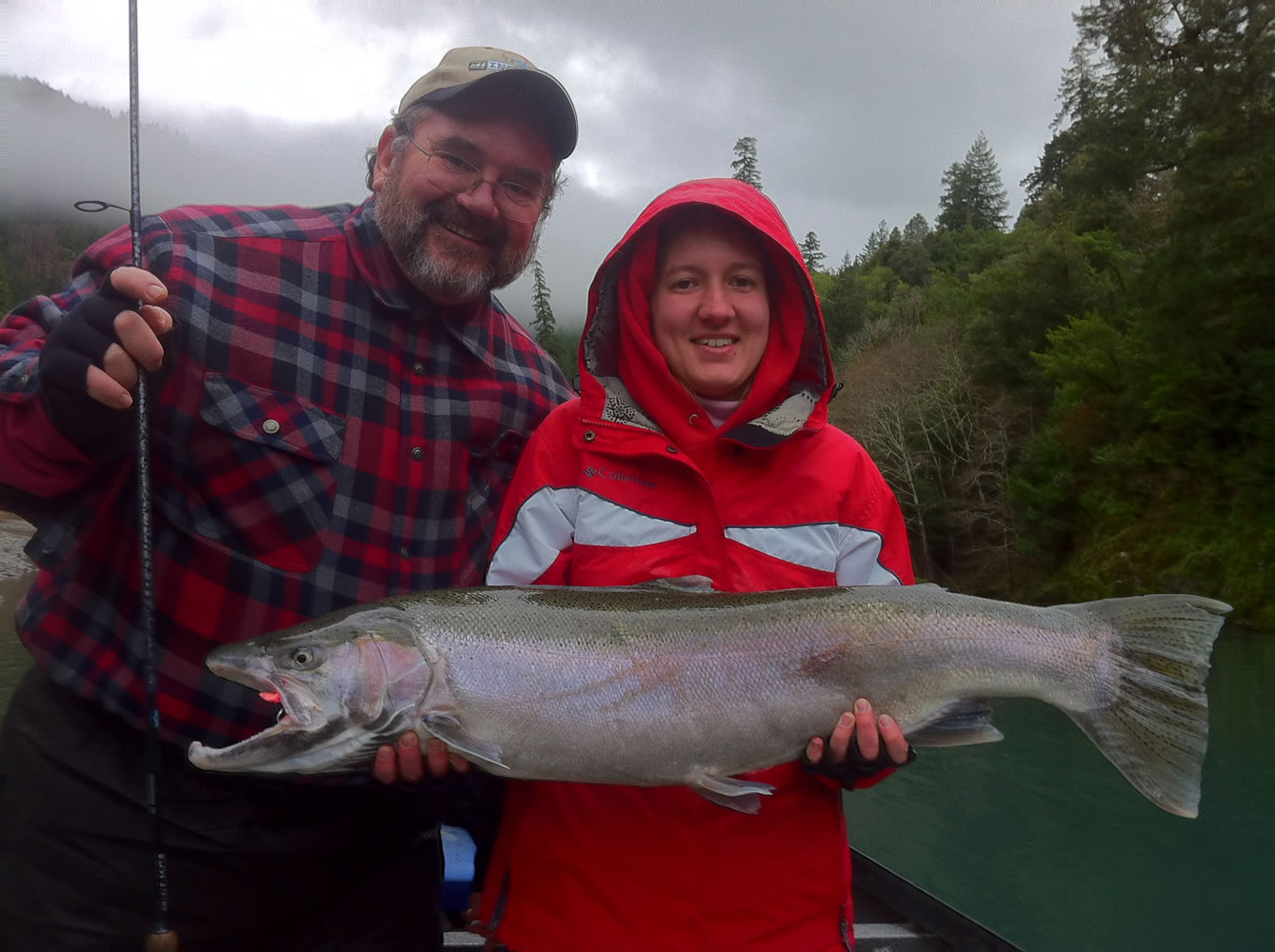BROOKINGS — Orie Winter’s plan on the upper Chetco River was simple — make sure his 20-year-old daughter, Emma, got at least a chance to land her first steelhead. And after Orie hooked and landed a fat wild steelhead of his own, all attention went Emma’s way.
“The plan was that I’d reel the next one in,” says Emma Winter, of Independence.
On the next drift, Orie hooked another steelhead and handed the rod over to Emma. Fifteen minutes later, neither Winter could believe the gift she had received.
Emma broke into the steelhead fraternity in majestic fashion, boating a 21-pound Chetco hatchery fish that stretched more than 37 inches.
“I couldn’t believe how big it was,” Emma Winter says. “I think my dad was pretty disappointed. But he did keep his promise.”
Big steelhead such as this — both wild and hatchery fish — have become more common this season on the Chetco, a south coast stream known as Oregon’s version of Alaska’s Kenai River.
In a stream where steelhead under 10 pounds are the norm, many fish weighing in the high teens and lower 20s have been caught in the early part of the steelhead season, which runs through March.
“It’s been a pretty good fishery so far this year,” says Todd Confer, the Oregon Department of Fish and Wildlife’s Gold Beach District fish biologist. “There have been some pretty nice hatchery fish showing up.”
Raised from wild broodstock, hatchery steelhead in the Chetco all head to sea as 1-year-olds, compared to the bulk of wild smolts that spend two years in freshwater, Confer says.
Most hatchery fish spend two years at sea before heading back to the river for the first of what can be multiple spawning runs.
Depending on ocean feeding conditions, those typical 3-year-old hatchery steelhead usually run from 4 to 12 pounds, Confer says.
“Last year, we had a bunch of those 4- to 6-pounders,” says Brookings-based guide Andy Martin, who rowed the Winters on their Saturday trip. “This year, we’ve had a lot of fish in the 10- to 12-pound range. And they’re really healthy looking. Really fat.”
But just what made Emma Winter’s first steelhead such a doozy is unknown because no one took samples of the fish’s scales, which show subtle changes denoting age and number of spawning runs.
It could be a rare hatchery fish in its third spawning run, having survived and returned to the ocean after its first two runs to beef up for that final run.
“It could be a 5- or 6-year-old fish, potentially, but we don’t see many of those,” Confer says.
Another explanation is that the fish spent an extra year or more at sea before making its first and only spawning run. That would have doubled the amount of time it could binge on krill and other ocean food that helps steelhead pack on the pounds.
And it helps that Chetco spawners have the big-fish gene in them.
“If there are good ones in the wild populations, there should be good ones in the hatchery population — and that’s what we’re seeing,” Confer says.
All of that was far from Emma Winter’s mind when her dad handed the wiggling spinning rod to her near the top end of Miller Bar, a prime steelhead riffle on the upper Chetco.
The fish stayed deep and lit off down river, with Emma reeling as Martin gave chase on the oars.
Near the tail-out, the steelhead flashed near the surface and all three aboard Martin’s driftboat realized they were dealing with something special.
“When I got it close, it was like, oh, my gosh,” Emma says. “We were all so excited.”
The steelhead, which bit on a cluster of roe, battled Emma like it knew a thing or two about breaking off a hook and leader. The fish darted under the boat and surfaced on the far side as if it wanted to snap the line on the driftboat chine.
But it eventually succumbed to the net.
“I couldn’t believe how big it was,” she says.
The steelhead had two other hooks in its mouth, proof that it had bested at least two other anglers who hooked it elsewhere in the river.
“It was amazing that two other people had lost it,” she says.
Almost as amazing was that Orie didn’t lose it when he discovered he had handed off what likely was the biggest steelhead of his angling life.
“You know, it doesn’t really matter,” Orie says. “The goal of the whole trip was to get her into a steelhead. And that we definitely did.”



